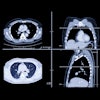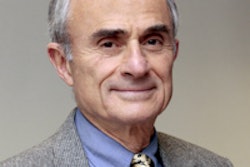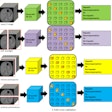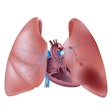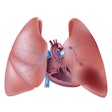
Malpractice risk is part of practicing medicine, and although radiologists are less likely than most physicians to be hit with malpractice claims, radiologists still have a 50% likelihood of being sued by the time they turn 60.
But there are concrete ways to minimize the risk, according to Dr. Jeffrey Mendel of Tufts University School of Medicine, who spoke on the topic at last month's International Symposium on Multidetector-Row CT.
"Only the mediocre are at their best every day," Mendel said. "And since none of us are mediocre, none of us will be at our best all the time, so we have to build systems into our practices to keep us performing at the highest level."
A simple standard of care?
The performance of the average qualified radiologist is considered the standard of care, Mendel said. Studies estimate that the average error rate for radiologists is 30% on retrospective review, 30% for interobserver disagreement, and 20% for intraobserver disagreement, according to Mendel. The majority of claims (75%) are due to errors in diagnosis -- either missing a lesion (70%) or seeing it but misinterpreting it (30%). A quarter of malpractice claims are due to the radiologist's failure to communicate or procedural complications.
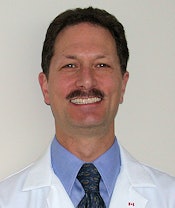 Dr. Jeffrey Mendel of Tufts University.
Dr. Jeffrey Mendel of Tufts University.Although breast imaging is the largest single source of malpractice claims, it still represents only 26% of all claims.
"We are not protected from malpractice claims because we don't do breast imaging," he said. "CT is involved with the other 74% of organ systems, and malpractice claims for CT are rising."
CT is different from other modalities because it produces so much information, according to Mendel. There are multiple choices for viewing data, from liver and overlapping reconstructions to maximum intensity projection (MIP) and multiplanar reconstruction (MPR).
"Liver windows increase detection of liver lesions by 3%, overlapping reconstructions by 7%," Mendel said. "MPRs have been reported to improve diagnoses in 47% to 65% of renal cell carcinomas, and MIP reconstructions decrease missed lung nodules by 55%."
CT also differs from other modalities in that the images can be highly customized, Mendel said.
"We can tailor how we view CT images, and often the acquisition or reconstruction parameters we choose aren't appropriate for the actual pathology," he said.
A patient's clinical history isn't always helpful, either. If the history suggests the actual diagnosis, it increases the true-positive rate. But if the patient's history is incomplete or inaccurate, it can misdirect the radiologist's search for a diagnosis.
"Confirmation bias happens when our interpretations confirm our preconceptions," he said.
And does PACS help radiologists better interpret CT studies? Maybe not, according to Mendel.
"We spend much more time searching for pertinent history and priors and adjusting hanging protocols than we do actually reviewing the images," he said.
Simple, but not easy?
How can practices help their radiologists avoid making CT mistakes? There are a few concrete ways:
- Incorporate CT imaging guidelines into written policies. "Many radiologists fail to follow the Fleischner guidelines; in fact, a 2010 study found that 22% are unaware of them, and 41% of practices don't use them," he said. "Emphasizing these guidelines in written policy can help."
- Watch yourself with teleradiology. "You're liable for the actions of the teleradiology firm you've hired," he said. "The teleradiology group needs to be monitored under your QA process and backed up by one of your radiologists. Let your referring clinicians know if the teleradiologists don't have ready access to old reports or studies."
Mendel also suggested that radiologists do the following:
- Gather as much pertinent clinical history as possible, including technologist observations and patient intake forms.
- Understand how technologists create images.
- Communicate -- and document the communication, especially significant abnormal findings or the need for additional imaging. Record pertinent negatives.
- Use checklists for procedures.
- Know common areas of CT images that present difficulty, such as lung bases on abdominal CT, scout images, solid organs and bowel on noncontrast CT, and soft tissues on spine CT.
What's the bottom line? Avoid malpractice claims by practicing better radiology.
"This isn't necessarily about defensive radiology," he said. "You can limit your exposure to malpractice claims by practicing high-quality medicine."

